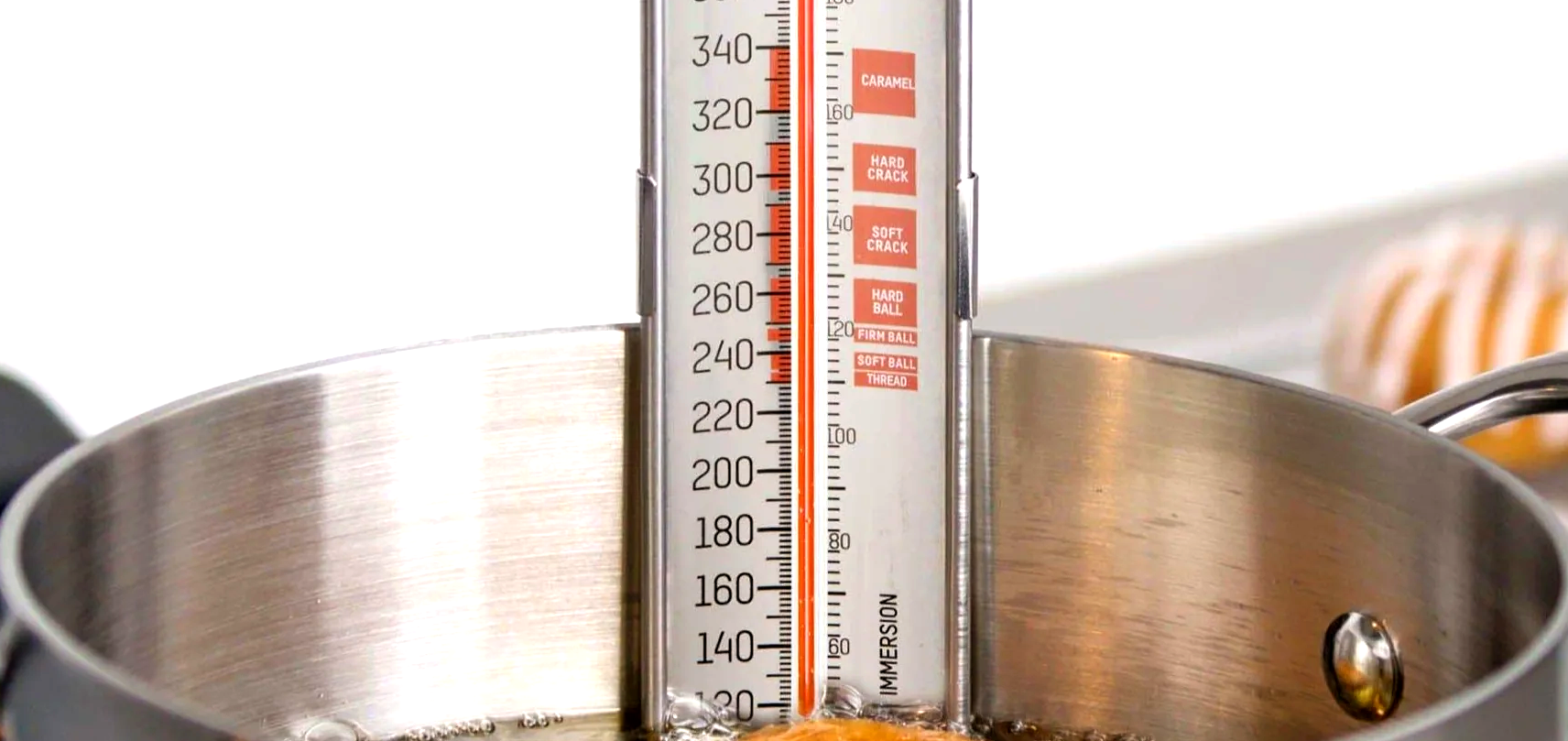The Simple Truth About Temperature

For a long time, I struggled with temperature charts, which are plentiful. They all, however, have one common denominator. Sea Level.
I live forty-eight hundred feet above sea level, and thus those charts require math. The extent of my interest in math is how many 0.685 ounce hand-dipped chocolates does it take to fill a one-pound gift box. This is not a trick question you find in some social media quizzes. The answer is about 23. Even that math doesn’t always hold up. Sometimes the pieces are bigger and I only get 21 or 20 pieces of cupped chocolates in a box. But that has nothing to do with temperature, so let’s move back to the subject at hand.
When we cook our caramel, we try to yank it off the stove right when it hits 232 degrees. But what triggers this article about temperatures is both the altitude math issue and our candy thermometer. Then you have the famous candy terms called soft ball, firm ball, and hard ball. Makes me think of Goldilocks. So which temperature is right? Forget the math if you are at forty-eight hundred foot elevation, and go to the cold water method. It’s easier but trickier.
When the candy is looking like you think it’s close, drop some in a glass of very cold water. (I say very cold because some of you reading this might think cold is anything lower than 98.6. Nope, go for a glass of ice cold water at about 40 degrees.) If the syrup gets stringy but not quite anything substantial, it’s worthless. Some people call this soft ball if you can get it to take shape. If it holds its shape but is still soft, it’s firm ball. If it will ball up and still squish a bit, then it’s hard ball. So in other words, without lots of trial and error, this method doesn’t work so great either. Here’s why.
When we make caramel for our corn or our apples, our mathified temperature is 232 degrees. If the steam on the thermometer will give way for a second and I can actually read it and it says 230 I get ready to pull it. Well, if I try the water method by the time I check the candy in the cold water, the temperature rose to 234. So I tested a soft ball but I pulled a hard ball. Maybe I’m just slow. What’s the difference? The softness of the caramel is the difference. The soft ball caramel is a bit stickier on corn or apples. The hard ball caramel is stiffer and on corn crunchier. In these two instances, it’s a matter of preference.
When my wife watches the temperature and I play the water game, we usually get dang close to perfect. Mostly because she ignores me and follows the thermometer. But she is kind and lets me play with the water, so I feel important.
So here’s the point I should have just started with. With candy, we just boil sugar, and water which we will call a syrup. The highest temperature that this sugar syrup reaches determines what the syrup will be like when it cools. When the water evaporates and the sugar concentrates in it, the temperature of the mixture rises. In other words, the more water evaporates, the harder the remaining sugar becomes.
Now if you’ve followed a while, in a recent post we examined all the ingredients and broke them down into three: Water, sugar and fat. The fat is to keep the sugar under control and make the sugar perform better. There is water in the fat (cream, milk, corn syrup, butter) So usually when we make candy, we’re not actually boiling water per se.
So for you non-mathematicians, or is it non-mathologists, here is a candy temperature chart a-la Merrell’s Millcreek Utah kitchen. (For you math guys – they represent a 207 degree boiling point rather than the 212 sea level boiling point, I think. Remember, I was an art guy in school, not a brainiac.)

